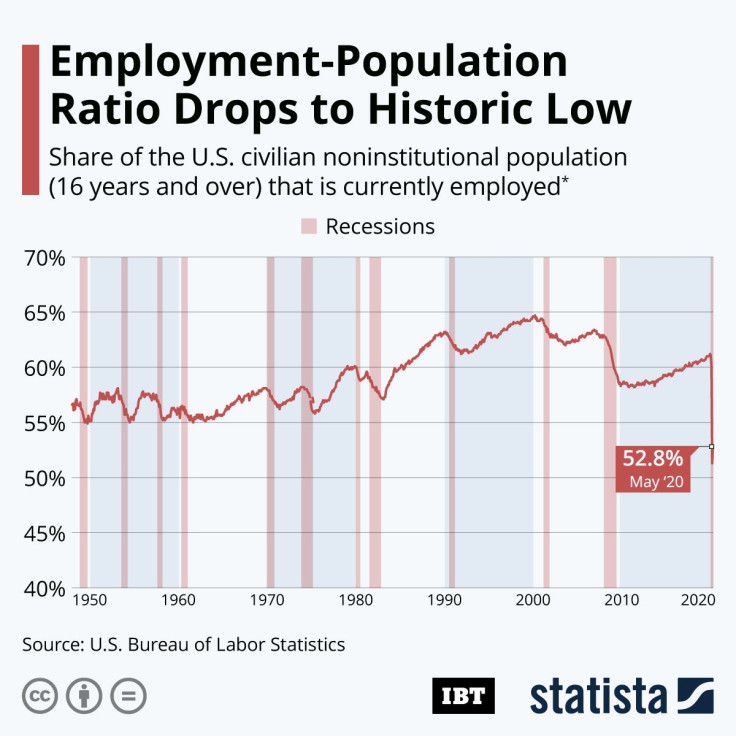Infographic: Employment-Population Ratio Shows Level Of Job Devastation In US

According to the U.S. Bureau of Labor Statistics’ latest jobs report, roughly 21 million Americans were unemployed in May 2020, resulting in a historically high unemployment rate of 13.3% on a seasonally adjusted basis. The number of people that are currently not employed is much higher than 21 million, however, as a look at another indicator, the employment-population ratio, reveals.
Standing at 52.8% in May, the employment-population ratio shows the percentage of the civilian noninstitutional population that is currently employed. In case you’re wondering, the civilian noninstitutional population comprises of all persons aged 16 and older who reside in the 50 states and the District of Columbia, are not inmates of institutions (e.g., penal and mental facilities, homes for the aged), and who are not on active duty in the Armed Forces. Of those 260 million people, only 137 million, i.e. 52.8%, had a job in May 2020, the lowest ratio since 1948 apart from April 2020 when things looked even worse.
So why does the employment rate stand at 13.3% when almost half the adult population doesn’t have a job? That’s because roughly 100 million Americans are not part of the labor force, meaning they are neither employed nor counted as unemployed. According to the BLS, this category includes retired persons, students, those taking care of children or other family members, and others who are neither working nor seeking work. While the majority of these people are either retired or don’t want a job for other reasons, almost 10 million Americans want a job but are not actively seeking one nor have they filed for unemployment.





















